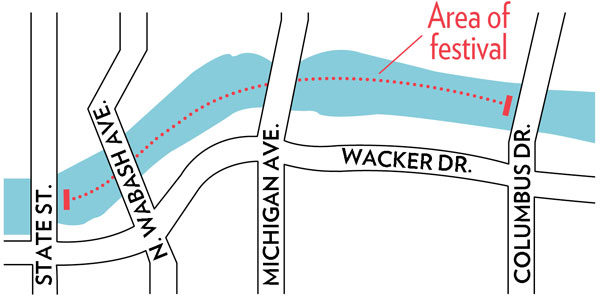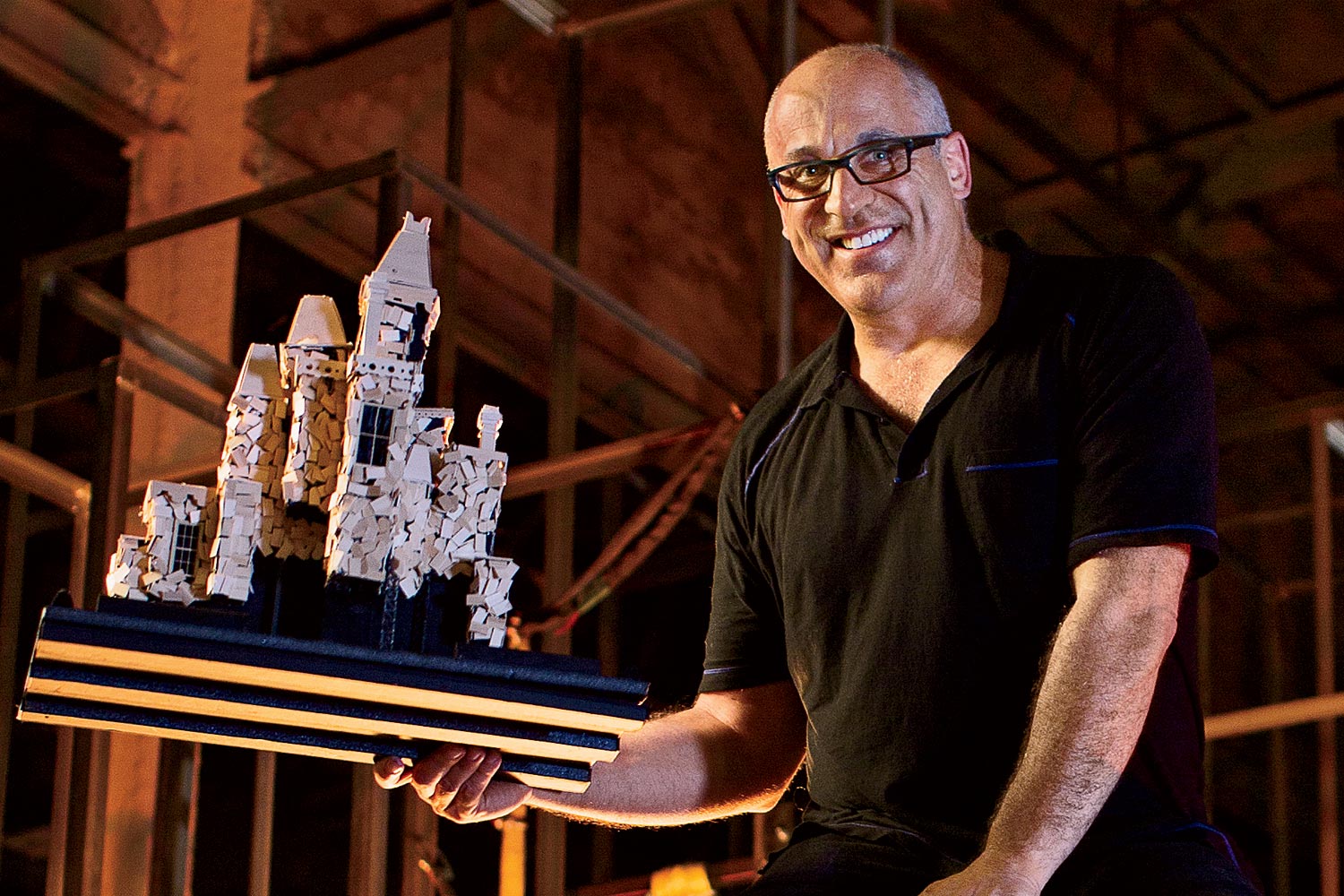On October 4, at about 8 p.m., 14 cauldrons of fire will be lowered into the Chicago River between State Street and Columbus Drive. Three floating platforms, each topped with models of pre-1871 buildings, will be set aflame to reveal symbolic structures rising 40 feet from the water, illuminated by fireworks, while thousands of spectators watch. Typical Saturday night on the river.
The Great Chicago Fire Festival began as a question in Jim Lasko’s head five years ago: Why doesn’t Chicago commemorate its most dramatic and significant event? “The Great Chicago Fire basically birthed our great cultural export: architecture,” says Lasko, 48, executive artistic director of Redmoon, the wildly original Pilsen-based not-for-profit theater company. “Our event celebrates the grit, greatness, and renewal of Chicago.”
When Daniel Burnham implored Chicagoans to make no little plans, he may as well have been speaking directly to Lasko. The Logan Square resident has been working behind the scenes since 2009 with everyone from the Department of Cultural Affairs and Special Events to the Coast Guard to make the festival a reality. His crew amassed more than 120 volunteers, secured countless private and public donors, and sent trailers back and forth dozens of times across Chicago to pick up 75 donated kayaks that will be part of a massive procession down the river.
The effort transitions nicely from Redmoon’s last big public undertaking, a three-month series of free events on the South and West Sides. Many of those events included the Cyclone Grill, Redmoon’s giant revolving contraption, which cooked food for more than 10,000 people in 15 low-income areas. Redmoon worked with 36 community-based organizations to celebrate their neighborhoods. In turn, portraits of the participants will be projected on the floating platforms that will light up Chicago on October 4, and many of the same people will host bazaar booths along the river.
The word “spectacle” often gets tossed around at Redmoon’s events, but this is their biggest-scale one yet. Beneath all the showmanship, though, the simple goal is to create conversations. Lasko, who spent last year as a Loeb Fellow at Harvard, sees the festival as the culmination of his longtime mission: to elevate the use of public spaces. “The promise of public space is congregation, which is the heart of democracy. But we don’t gather in public spaces. We move through it, we isolate.”
If all goes as planned, the surreal scene will become an annual tradition, and the embers will spark a dialogue about a city’s potential for resilience. It could also solidify Lasko’s place as a power player in town, but he shows little interest in that. “It’s not Jim Lasko’s Chicago Fire Festival,” he says. “Who cares who makes it happen as long as we capture the public’s imagination? No one knows who invented Mardi Gras.”
Flaming Waters
Gongs! Smoking steamships! Fireworks! Here’s what you can expect during Redmoon’s October 4 fire festival extravaganza.

8:00 p.m. Two boats kick off the procession, carrying several of Chicago’s first responders and 15 Chicago residents.
8:10 Volunteers light 14 cauldrons and lower them into the river between State Street and Columbus Drive.
8:15 Twenty-two kayakers pull floating fire pits toward three model houses stationed throughout the river.
8:30 Redmoon actors aboard four smoking steamships light the model houses on fire.
8:40 Once burned, each Victorian-style house reveals a sculpture that symbolizes the city’s rebirth.
8:50 A fireworks show begins as Beethoven’s Ninth Symphony plays over loudspeakers.
9:00 The finale: 75 kayakers pull planters full of prairie grass toward Lake Michigan.



